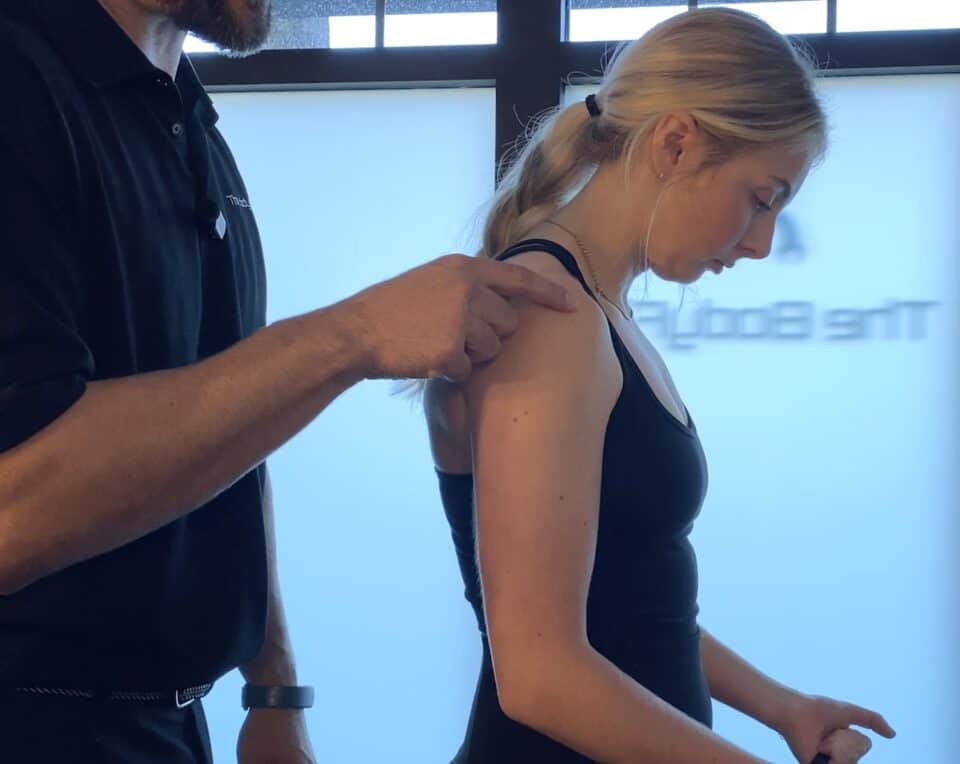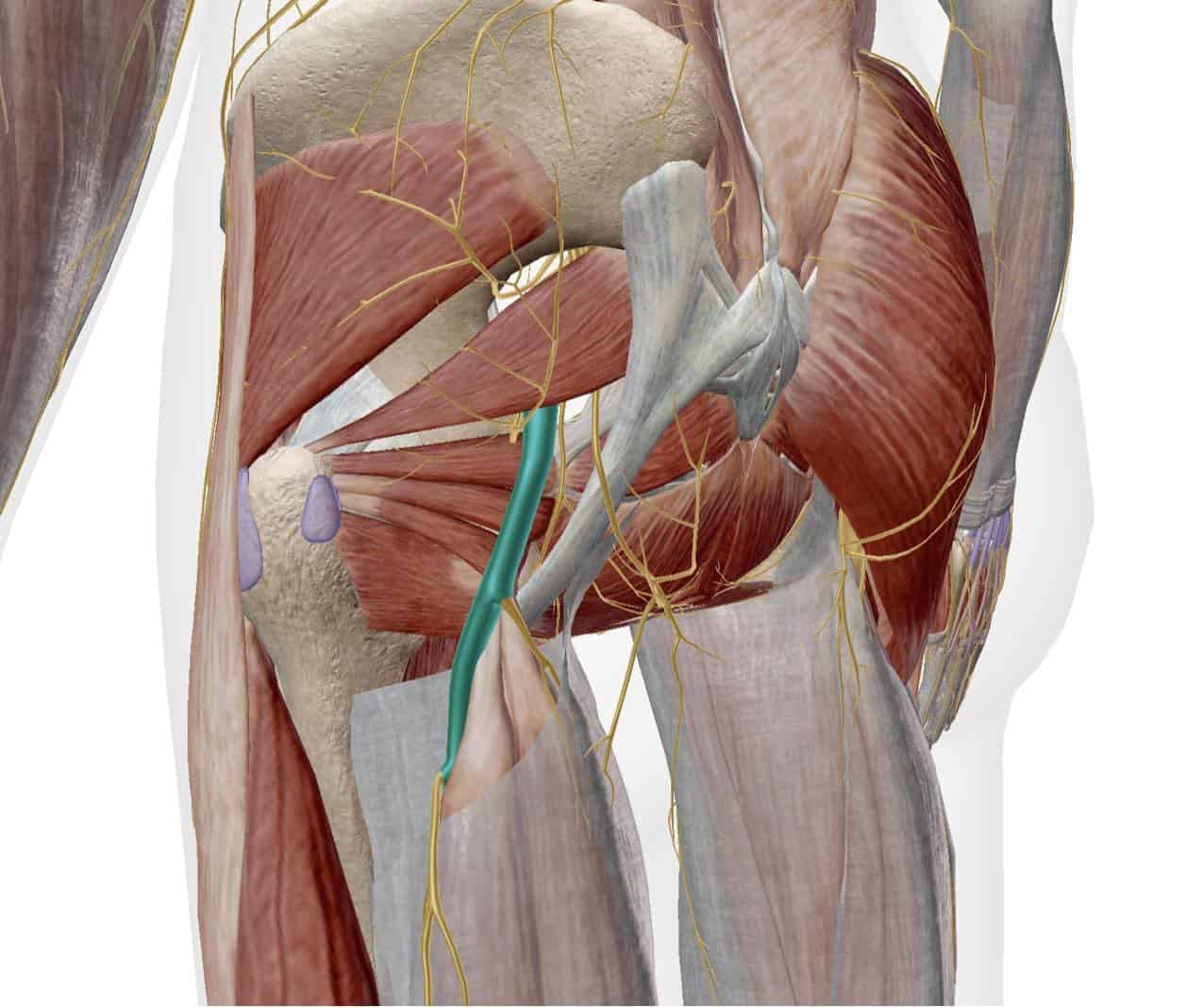Shoulder impingement syndrome occurs when the tendons of the rotator cuff and the subacromial bursa (a fluid-filled sac that reduces friction in the shoulder joint) become compressed or pinched between the bones of the shoulder, particularly the acromion (part of the shoulder blade) and the head of the humerus (upper arm bone). The true causes of shoulder impingements are often multifactorial and can include a combination of anatomical, biomechanical, and environmental factors. Here are some of the key contributors:
Table of Contents
- I. Anatomical Factors:
- II. Muscle Imbalances:
- III. Poor Posture:
- IV. Overuse or Repetitive Movements:
- V. Trauma or Injury:
- VI. Age-Related Changes:
- VII. Inflammation and Swelling:
I. Anatomical Factors:
- Acromial Shape: The shape of the acromion can influence the likelihood of impingement. A hooked or curved acromion may reduce the space available for the tendons and bursa, increasing the risk of impingement.1
- Subacromial Spurs: Bony projections or spurs on the underside of the acromion can also contribute to impingement by further narrowing the subacromial space. This is one aspect of degenerative arthritis.
II. Muscle Imbalances:
- Rotator Cuff Weakness: Weakness in the muscles of the rotator cuff, which play a crucial role in stabilizing the shoulder joint, can lead to altered mechanics and impingement. Specifically, we want a shoulder to see more external rotation compared to internal rotation.
- Muscular Tightness: Tightness in certain muscles, such as the chest muscles (pectoralis major) or the muscles around the shoulder blade (subscapularis), can affect shoulder biomechanics and contribute to impingement. Treating any muscle that involves internal rotation of the rotator cuff is a must as they do get very tight.
Experience the BodyFix Difference
Experience the difference that patient-centric, whole-body chiropractic care can make. Discover how The BodyFix’s unique approach addresses not just your pain, but your overall wellness for lasting results.
III. Poor Posture:
This is an area we chiropractors focus greatly on because if we can get people to stand more straight where the ears line up with the shoulders then the cervical spine, thoracic spine or glenohumeral joints would be in less pain but more importantly would have better functional range of motion. These are the biggest faults we see when assessing posture:
- Forward Shoulder Posture: When a person adopts a forward head and rounded shoulder posture, it can lead to a protracted or forward position of the shoulders. This position narrows the subacromial space, which is the space between the acromion (part of the shoulder blade) and the head of the humerus (upper arm bone). Narrowing of this space increases the risk of impingement.
- Thoracic Kyphosis: Poor posture often involves excessive rounding of the upper back, known as thoracic kyphosis. This can alter the normal mechanics of the shoulder joint, contributing to impingement issues. The altered position of the upper back can influence the orientation of the shoulder blades and impact the movement of the arm. You folks that sit 8-10 hours per day take note!
IV. Overuse or Repetitive Movements:
- Activities that involve repetitive overhead movements or excessive use of the shoulder joint, such as weightlifting, throwing, or certain sports, can lead to overuse injuries and impingement. When we give our patients rehab to follow, understanding scapular (shoulder blade) motion is a must when performing any exercise of the shoulder girdle.2
V. Trauma or Injury:
- Previous injuries or trauma to the shoulder, such as dislocations or fractures, can alter the anatomy of the shoulder joint and increase the risk of impingement. 3Sometimes this can lead to overall instability and degenerative arthritis. In cases of a hooked acromion (a bony protrusion on the shoulder blade), specific treatment may be required. But don’t let this dishearten you because we can still get a functional range of motion. We just have to take one step back to get two steps forward with treatments, such as hooked acromion treatment, or training.
VI. Age-Related Changes:
- As individuals age, the structures within the shoulder may undergo degenerative changes, including changes in the tendons and the acromion, which can contribute to impingement. Age-related issues usually take longer to treat but we can still get results.4
VII. Inflammation and Swelling:
- Inflammatory conditions, such as bursitis or tendonitis, can result in swelling and increased pressure within the subacromial space, contributing to impingement. Class IV Laser Therapy such as our Summus Laser helps modulate Inflammation so rehab can get quickly underway with less pain.
Experience the BodyFix Difference
Experience the difference that patient-centric, whole-body chiropractic care can make. Discover how The BodyFix’s unique approach addresses not just your pain, but your overall wellness for lasting results.
It’s important to note that a combination of factors can vary among patients. A comprehensive assessment by our team is crucial for accurate diagnosis which can lead to special imaging and the development of an effective treatment plan tailored to the specific causes and needs of the individual. At The BodyFix, our treatments are focused on a holistic approach and a method that produces RESULTS!
It is our opinion that a simple chiropractic adjustment (pop/crack) to the shoulder won’t do the trick and many times can make the matter worse because the shoulder is a highly mobile joint that needs more stability training. Not to say an adjustment wouldn’t help!
It’s to say there is a time and place for that aspect of treatment to be used and it usually coincides with many muscle release techniques and rehabilitation exercise training. This is why we provide more than a pop and crack and we strive for patients to leave pain-free.
Follow & Subscribe to @TheBodyFixChiro YouTube channel to see exercise and proper Body Mechanics to stay well-balanced and keep your body pain-free!
Find out more information from our experts at The BodyFix. Or Book an Appointment with us today to start your healing journey! For more information, you can call us at 843-981-4500.
Blog Disclaimer: The information provided on The BodyFix Chiro blog is for general informational and educational purposes only and is not intended as medical advice. These articles reflect our opinions and experiences but should not be used to diagnose or treat any health conditions. Always consult with your physician, chiropractor, or other qualified healthcare provider before starting any new treatment, exercise program, or making changes to your health routine. Any actions you take based on information from this blog are entirely at your own risk, and The BodyFix Chiro and its contributors disclaim any liability for the decisions you make based on this information.



